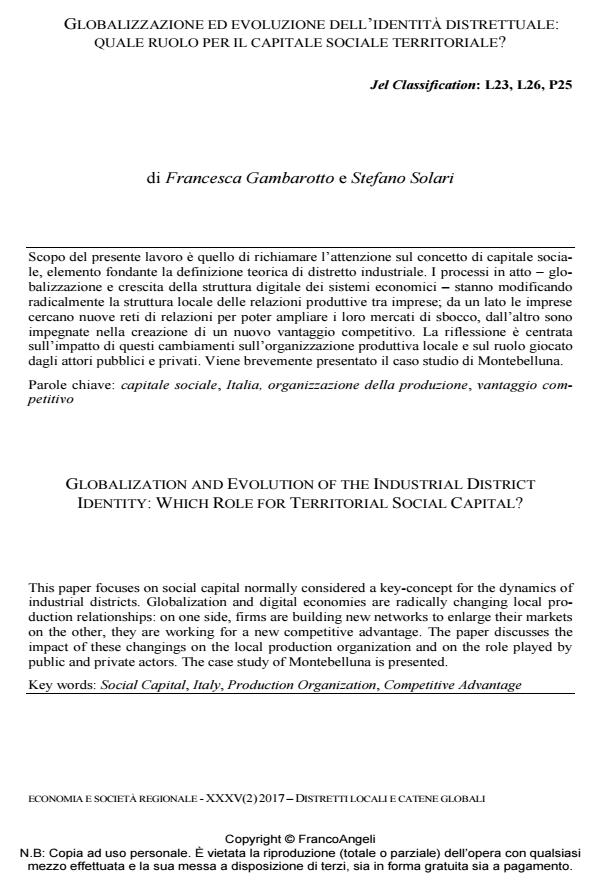Globalization and evolution of the industrial district identity: which role for territorial social capital?
Journal title ECONOMIA E SOCIETÀ REGIONALE
Author/s Francesca Gambarotto, Stefano Solari
Publishing Year 2017 Issue 2017/2
Language Italian Pages 9 P. 76-84 File size 210 KB
DOI 10.3280/ES2017-002007
DOI is like a bar code for intellectual property: to have more infomation
click here
Below, you can see the article first page
If you want to buy this article in PDF format, you can do it, following the instructions to buy download credits

FrancoAngeli is member of Publishers International Linking Association, Inc (PILA), a not-for-profit association which run the CrossRef service enabling links to and from online scholarly content.
This paper focuses on social capital normally considered a key-concept for the dynamics of industrial districts. Globalization and digital economies are radically changing local production relationships: on one side, firms are building new networks to enlarge their markets on the other, they are working for a new competitive advantage. The paper discusses the impact of these changings on the local production organization and on the role played by public and private actors. The case study of Montebelluna is presented.
Keywords: Social Capital, Italy, Production Organization, Competitive Advantage
Jel codes: L23, L26, P25
Francesca Gambarotto, Stefano Solari, Globalizzazione ed evoluzione dell’identità distrettuale: quale ruolo per il capitale sociale territoriale? in "ECONOMIA E SOCIETÀ REGIONALE " 2/2017, pp 76-84, DOI: 10.3280/ES2017-002007